

Dessiner les émotions avec Klassen. L'école des loisirs. The Heart and the Bottle: A Tender Illustrated Fable of What Happens When We Deny Our Difficult Emotions. “Children … are the most attentive, curious, eager, observant, sensitive, quick, and generally congenial readers on earth,” E.B.
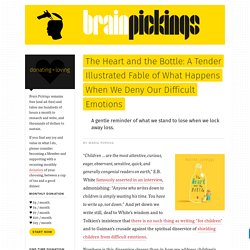
White famously asserted in an interview, admonishing: “Anyone who writes down to children is simply wasting his time. You have to write up, not down.” And yet down we write still, deaf to White’s wisdom and to Tolkien’s insistence that there is no such thing as writing “for children” and to Gaiman’s crusade against the spiritual disservice of shielding children from difficult emotions. Nowhere is this disservice clearer than in how we address children’s experience of life’s darkest moments, as evidenced by the minuscule the pool of intelligent and imaginative books that help kids make sense of death and loss. And nowhere is there more heartening an antidote than in The Heart and the Bottle (public library) by the inimitable Oliver Jeffers.
The bottle couldn’t be broken. The heart was put back where it came from. The red tree. The Red Tree is a story without any particular narrative; a series of distinct imaginary worlds as self-contained images which invite readers to draw their own meaning in the absence of any written explanation.
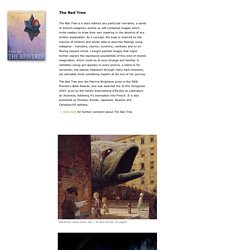
Cry, Heart, But Never Break: A Remarkable Illustrated Meditation on Loss and Life. “Each day, we wake slightly altered, and the person we were yesterday is dead,” John Updike wrote, “so why … be afraid of death, when death comes all the time?”

Half a millennium earlier, Montaigne posed the same question somewhat differently in his magnificent meditation on death and the art of living: “To lament that we shall not be alive a hundred years hence, is the same folly as to be sorry we were not alive a hundred years ago.” Michael Rosen’s Sad Book: A Beautiful Anatomy of Loss, Illustrated by Quentin Blake. “Grief, when it comes, is nothing like we expect it to be,” Joan Didion wrote after losing the love of her life.

“The people we most love do become a physical part of us,” Meghan O’Rourke observed in her magnificent memoir of loss, “ingrained in our synapses, in the pathways where memories are created.” Those wildly unexpected dimensions of grief and the synaptic traces of love are what celebrated British children’s book writer and poet Michael Rosen confronted when his eighteen-year-old son Eddie died suddenly of meningitis. Never-ending though the process of mourning may be, Rosen set out to exorcise its hardest edges and subtlest shapes five years later in Michael Rosen’s Sad Book (public library) — an immensely moving addition to the finest children’s books about loss, illustrated by none other than the great Quentin Blake.
This is me being sad. Maybe you think I’m happy in this picture. Sometimes sad is very big. Then I look like this. Sometimes this makes me really angry. Angry Arthur by Hiawyn Oram & Satoshi Kitamura, book of a lifetime. My book of a lifetime is Angry Arthur by Hiawyn Oram and Satoshi Kitamura.
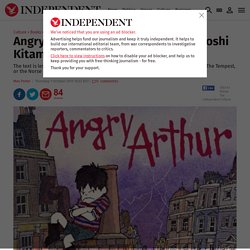
It is about a child who is told to stop watching TV and go to bed. He gets angry and angrier and destroys… everything. He ends up sitting, alone, on a chunk of Mars, wondering why he was so cross. The text is less than 200 words, but its impact on me, over the years, is comparable to that of The Tempest, or the Norse myths, or Beckett. Princess Penelope's Parrot by Helen Lester, Helen Lester, Author, Lynn M.
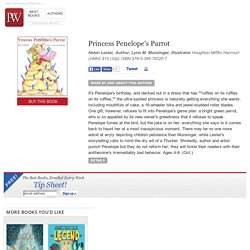
Munsinger, Illustrator Houghton Mifflin Harcourt (HMH) $15 (32p) ISBN 978-0-395-78320-7 It's Penelope's birthday, and decked out in a dress that has ""ruffles on its ruffles on its ruffles,"" the ultra-spoiled princess is naturally getting everything she wants, including mouthfuls of cake, a 16-wheeler bike and jewel-studded roller blades. One gift, however, refuses to fit into Penelope's game plan: a bright green parrot, who is so appalled by its new owner's greediness that it refuses to speak.
Penelope fumes at the bird, but the joke is on her: everything she says to it comes back to haunt her at a most inauspicious moment. There may be no one more adroit at wryly depicting childish petulance than Munsinger, while Lester's storytelling calls to mind the dry wit of a Thurber. The Dark. Praise New York Times Best Illustrated 2014 Charlotte Zolotow Award Winner.
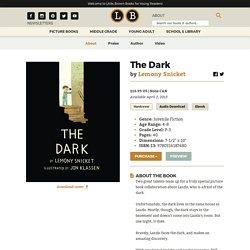
Dr. Seuss - What Was I Scared Of? Footpath Flowers. “How we spend our days, of course, is how we spend our lives,” Annie Dillard wrote in her magnificent defense of living with presence.
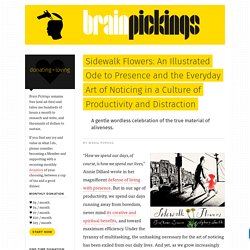
But in our age of productivity, we spend our days running away from boredom, never mind its creative and spiritual benefits, and toward maximum efficiency. Under the tyranny of multitasking, the unitasking necessary for the art of noticing has been exiled from our daily lives. And yet, as we grow increasingly disillusioned with the notion of “work/life balance,” something in our modern souls is aching for the resuscitation of this dying capacity for presence. That capacity is especially essential in parenting, where the cultural trope of the device-distracted parent is an increasingly disquieting pandemic. Sidewalk Flowers (public library) tells the wordless story of a little girl on her way home with her device-distracted father, a contemporary Little Red Riding Hood walking through the urban forest.
Scary Stories to Tell in the Dark. Overview[edit] Schwartz drew heavily from folklore and urban legends as the topic of his stories, researching extensively and spending more than a year on writing each book.[1][2] The first volume was published in 1981, and the books have subsequently been collected in both a box set and a single volume.
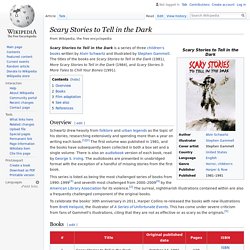
There is also an audiobook version of each book, read by George S. Irving. The audiobooks are presented in unabridged format with the exception of a handful of missing stories from the first book. My Father’s Arms Are a Boat: A Tender Norwegian Tale of Love and Loss. By Maria Popova The finest children’s books have a way of exploring complex, universal themes through elegant simplicity and breathless beauty.
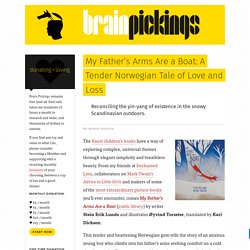
From my friends at Enchanted Lion, collaborators on Mark Twain’s Advice to Little Girls and makers of some of the most extraordinary picture-books you’ll ever encounter, comes My Father’s Arms Are a Boat (public library) by writer Stein Erik Lunde and illustrator Øyvind Torseter, translated by Kari Dickson. This tender and heartening Norwegian gem tells the story of an anxious young boy who climbs into his father’s arms seeking comfort on a cold sleepless night. The two step outside into the winter wonderland as the boy asks questions about the red birds in the spruce tree to be cut down the next morning, about the fox out hunting, about why his mother will never wake up again.